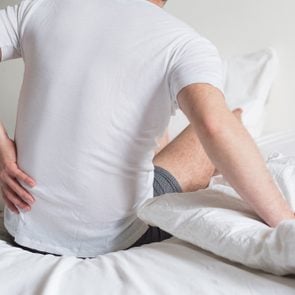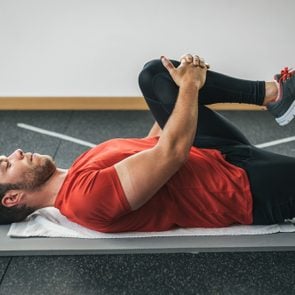6 Stretches for Lower Back Pain
Updated: Jun. 10, 2021
When back pain or tightness is kicking your butt, get lower back pain relief with these six stretches for lower back pain.
Lower back pain 101
Low back pain is a beast. And not just because it can make you feel like your body is rebelling against you. Back pain can is a symptom of a problem. To treat the symptom—with things like stretches for lower back pain—you have to know what the problem is.
This becomes complicated because the cause of low back pain is sometimes hard to pin down. Sometimes it’s obvious. You pick up a heavy box without thinking about proper lifting form and—bam!—you pull a muscle and end up with an acute bout of pain. But other times, the problem is more insidious and unclear.
Maybe after years of inactivity, you’ve felt pain starting to creep in, possibly due to changes in muscle balance, decreases in strength, and general inflammation. Maybe you injured yourself years ago and, over time, a minor injury exacerbated it into something more serious.
Sound familiar? You’re not alone. According to the American Chiropractic Association, an estimated 80 percent of the population will experience back pain at some point in their lives. In fact, half of all working Americans report having back pain each year. And despite a growing population of professionals who dedicate their careers to helping intervene, treat, and prevent back pain, it’s still a common issue.

Here’s why stretching could help lower back pain
That doesn’t mean you have to live with the pain. Movement (you know, exercise) is one of the best ways to prevent, limit, and address back pain.
“Most of us aren’t moving in the variety of ways our bodies are built for, and habitual postures and sedentary living create excessive muscular tension, which leads to discomfort,” says Lara Heimann, a licensed physical therapist and yoga instructor. “Our bodies signal to us ‘please move!’ But we often ignore the signals and instead adapt to not listening. Over time, we lose some of the innate brain signalings that would otherwise keep us healthy and mobile.”
The answer, then, is to move more. You need a well-rounded exercise program that includes back pain exercises, as well as cardiovascular and muscle-strengthening exercises. Incorporating flexibility and stretching exercises can also help you attain and maintain the range of motion you need to help keep pain at bay. (One of these products for lower back pain may also help you find relief.)
How exactly does stretching help?
“Taking time to stretch helps decrease stiffness, reduces pain and discomfort, and reprograms our brains to send signals when we need to get up and stretch,” Heimann says. “With this improved connection between brain and body, the body can more successfully respond to the demands imposed by various types of movement and activity.”
Regular stretching can also facilitate better circulation, allowing for more efficient transportation of oxygen and nutrient-rich blood throughout the body, says Heimann. (Check out these back massagers for lower back pain relief, too.)
But most importantly, Heimann stresses that stretching is a preservation tool for movement, helping prevent tightness and tension that can set the stage for injuries. “Regular stretching helps to preserve joint health,” Heimann says. “The joint can move freely and efficiently in all directions with decreased stress placed on its structures.” (Here are simple stretching exercises for stress relief.)
So yes, while you’re battling a bout of pain, stretching might help alleviate some of the pain, not unlike an over-the-counter anti-inflammatory or a massage. But the real role of stretching—and the reason flexibility training is so important—is to maintain a proper range of motion with all of your joints. And that means including stretching in your weekly routine. Try the seven stretches below when you wake up in the morning.
Word of caution
Back pain has so many causes and some are more serious than others. If your back pain persists for more than a few days, or if it’s severe or causes weakness or tingling in your extremities, make an appointment to see your doctor. Also, avoid any stretch or exercise that causes sharp or shooting pain. Not all types of stretches or exercises are appropriate for every person or every injury. This is why extended self-treatment isn’t advised. To address an issue effectively, you need to know exactly what the issue is. (Here are the signs your back pain is an emergency.)
Warm up
You know how you feel a little more tight first thing in the morning or after sitting still for a few hours? While stretching is a good way to “wake up” your muscles and joints after remaining stationary, you’ll feel better all-around if you’ve gotten your blood pumping a little bit first. And you’ll likely move more smoothly and comfortably through a full range of motion as you stretch. (These are the best mattresses for lower back pain.)
This is because circulating blood delivers oxygen and nutrients to your working muscles, helps warm them up, and prepares them for whatever movements you’re about to ask of them. This is part of that brain-body communication that Heimann mentioned. (Should you stretch before a workout?)
Static stretching vs dynamic stretching
Static stretching—holding a stretch for 10 or more seconds at a time in a stationary position—is best performed at the end of a workout when your body is more loose and pliable. Dynamic stretches—a more active form of stretching that takes a joint through a full range of motion in a slow and controlled fashion—can be performed before a workout or independently.
Either way, walking briskly or marching in place for a few minutes before you dive in is a good way to help prep your body for your stretching routine. For each of the exercises below, an exercise mat is recommended.
The best stretches for lower back pain
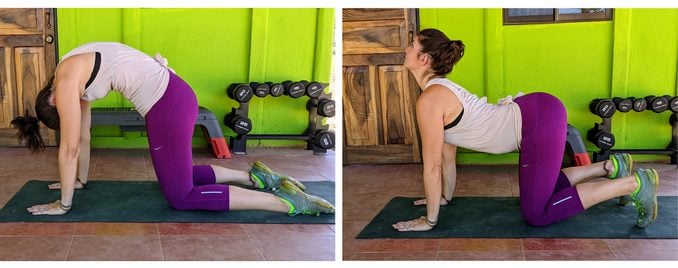
Cat-Cow
For those with back pain, cat-cow—an exercise that is popular in yoga—is a good, active stretch that takes the spine through flexion and extension. According to Heimann, it can help improve posture. Plus, it’s one of the best stretches to do for morning back pain relief.
How to do Cat-Cow
Start on your hands and knees on the floor in a “tabletop” position (back flat, knees under your hips, palms under your shoulders). In a controlled action, press your tailbone up and slowly extend your spine by allowing your abdomen to release toward the floor as you press your chest and shoulders up. You should create a U-shaped curve in your back as you look up toward the ceiling. Think about moving each vertebra separately in a wave-like fashion as you create the extension.
Hold for a second, then reverse the action. This time, release your head and neck toward the floor as you flex your spine, ultimately tucking your tailbone under to create a rainbow-like arc with your spine.
The first position is “cat,” and the second position is “cow.” As you move into cat, inhale; as you move into cow, exhale. Continue alternating between the two positions for a total of 30 to 60 seconds to help release tension in the back.
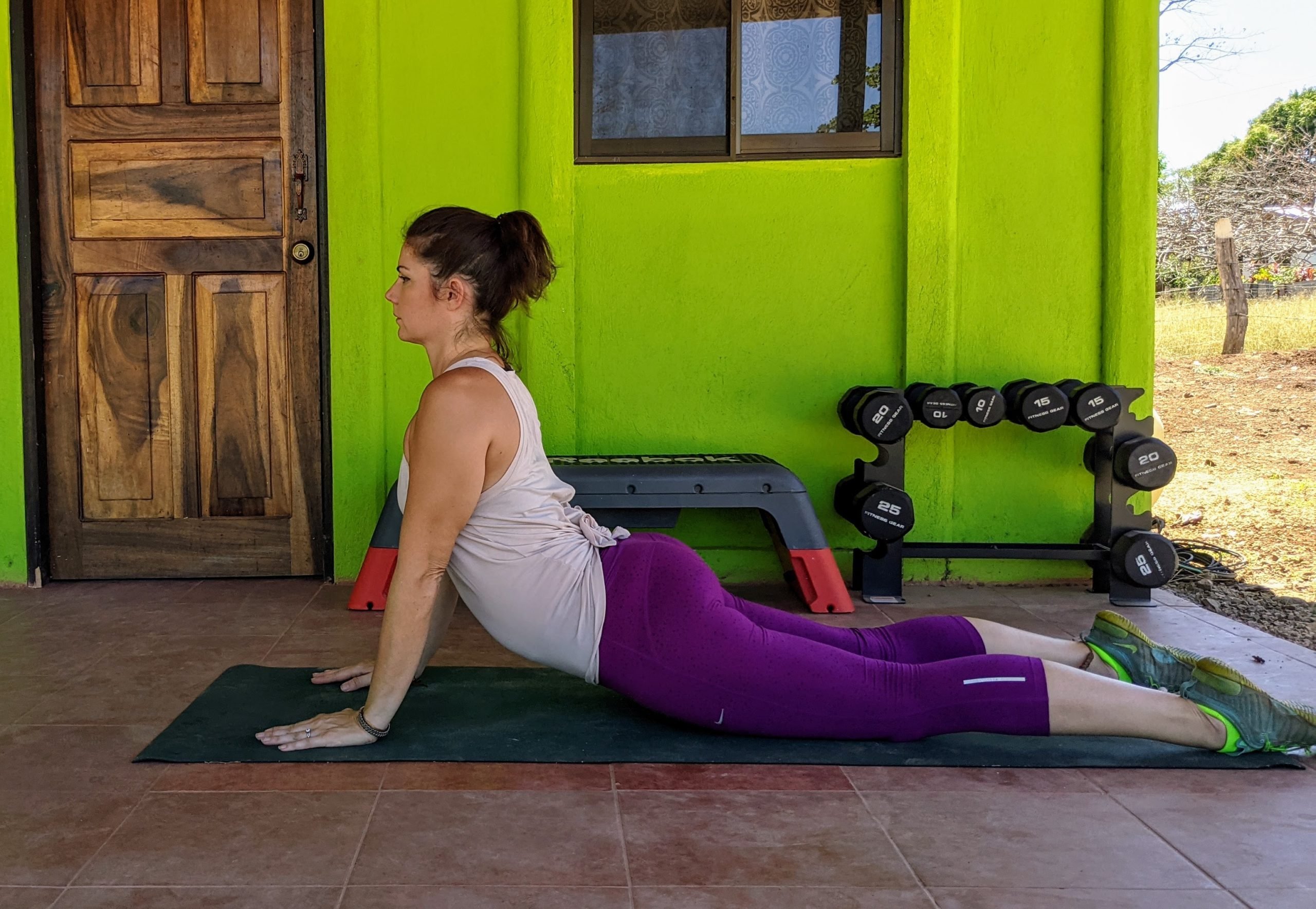
Prone Press-up
The Prone Press-up is sometimes called the cobra pose in yoga. But it’s also an essential part of the McKenzie Method that physical therapists and other clinicians often use to help address back pain. While people with low back pain might assume that back flexion (stretches like forward bends to touch the toes) should be used to help loosen up tight hamstrings, hips, and low back, the research actually suggests otherwise. Many people with low back pain are better served by doing back extension exercises, like the prone press-up.
“Through clinical observation and research, we have seen that moving into the direction of lumbar spine extension can make a tremendous difference in many people with low back pain,” says chiropractor Jordan Duncan, the owner of Silverdale Sport & Spine, a clinic specializing in difficult-to-treat musculoskeletal pain in Silverdale, Washington.
“One reason for the great benefit of moving into spinal extension is likely due to the fact that as a society we spend the bulk of our time in flexion and very little time in extension,” he says. “Therefore, in the majority of people, spinal extension allows us to undo the effects of a great deal of time spent in flexion.”
How to do Prone Press-up
Lie on your stomach with your palms flat on the mat at your shoulders, as if you were going to do a pushup. Keeping your legs and hips on the floor, press through your palms and lift your chest from the mat, aiming to fully extend your elbows as you try to achieve full extension through your spine. Hold for one or two seconds, then slowly reverse the movement and lower your chest back to the floor.
Continue repeating the exercise in a controlled fashion for 30 to 60 seconds. If you can’t reach full extension without pain or irritation, move to the range of motion you can comfortably achieve. As an alternative, press up to a partial extension balanced on your elbows.
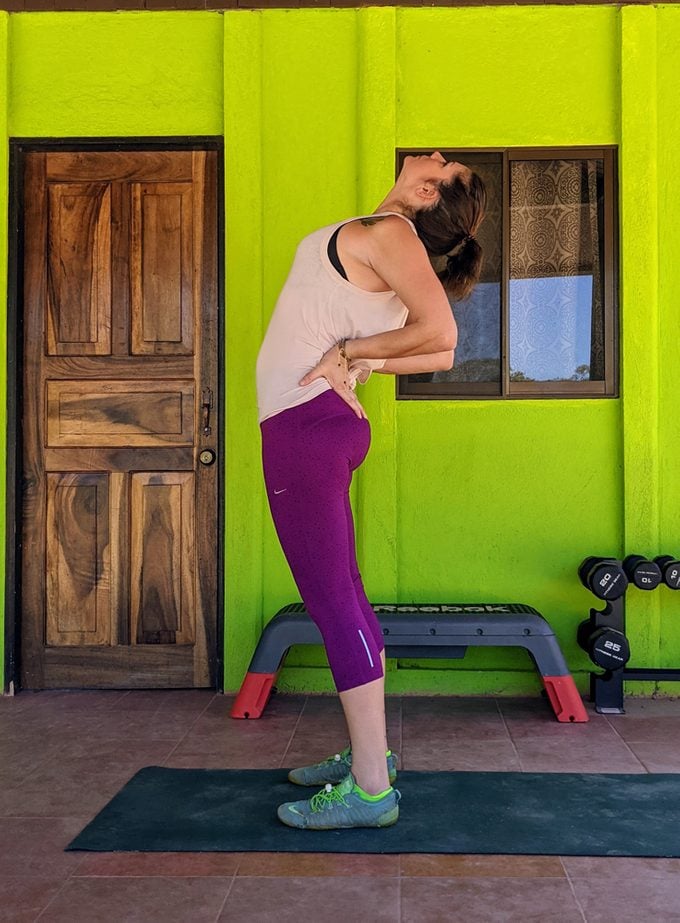
Standing Backbend
If the Prone Press-up is simply not doable, the Standing Backbend is another option for achieving back extension. This can be particularly helpful if you experience localized pain while sitting, says physical therapist Sara Mikulsky, owner of Wellness Physical Therapy. “When we spend long hours sitting, our core muscles can weaken and our hip flexors can tighten,” she says. “This then puts abnormal strain on the spine and its structure, which can lead to pain.” (Here are the habits damaging your spine and back.)
How to do Standing Backbend
Stand tall with your feet roughly hip-distance apart and your knees very slightly bent. Place your hands on the back of your hips. Engage your core and gently lean back. Don’t overdo it, but do allow your shoulders to open and your chest to lift up toward the ceiling. Hold for a few seconds, then carefully return to the starting position. Repeat for 30 to 60 seconds.
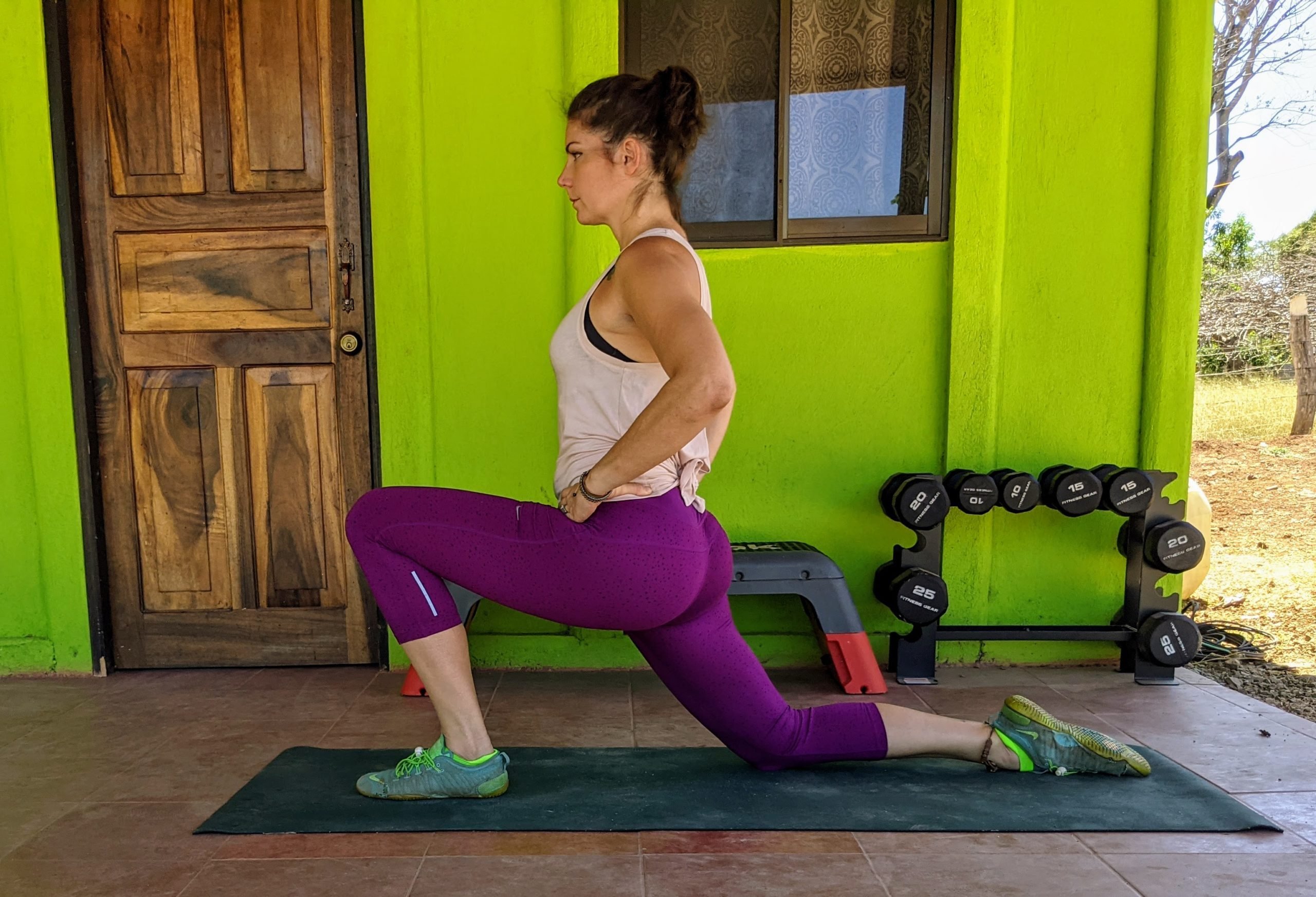
Kneeling Hip Flexor
The Standing Backbend can help stretch the hip flexors while also releasing tension in the lumbar spine. You can also specifically target your hip flexors to help loosen them up with a Kneeling Hip Flexor.
How to do Kneeling Hip Flexor
Start on your knees, your hips extended and your torso tall. Place your right foot on the floor in front of you, with your right knee bent at a 90-degree angle (as if you’re about to propose). Place your hands on your hips and shift your weight forward without leaning your torso forward as you press and more fully extend your left hip flexor.
You should feel the stretch at the front of your left hip. Hold for a second, release the stretch, then repeat. Continue for 30 to 60 seconds, then switch legs.
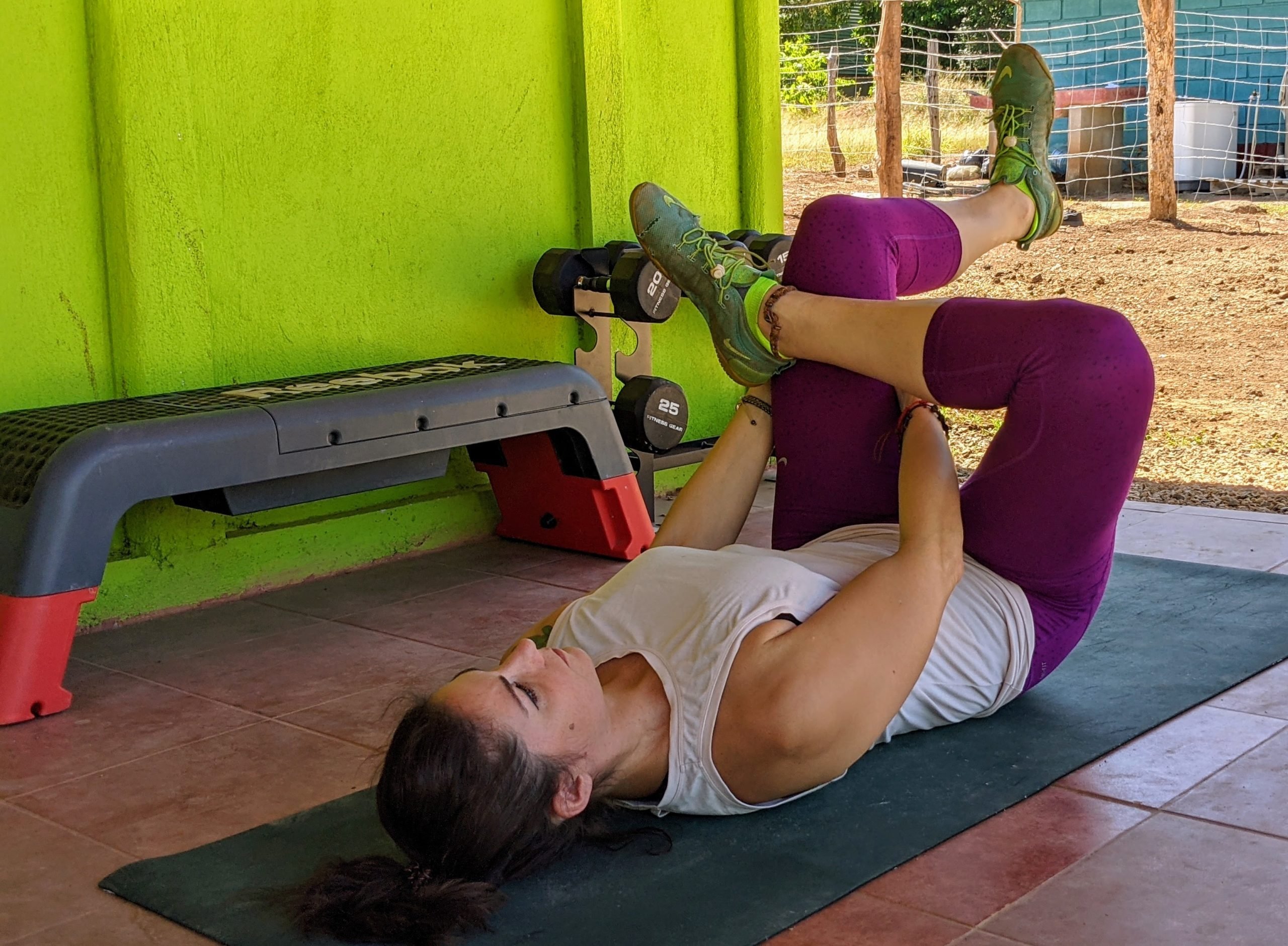
Supine Figure 4 Stretch
If you tend to have pain that travels down your leg, the best stretches might differ. Mikulsky points out that this form of pain may be caused by a nerve or disc injury that requires further medical attention. However, stretches—like the Supine Figure 4 stretch—that target a deep muscle in your buttocks called the piriformis, might provide some lower back pain relief (although they’re unlikely to fix the underlying problem). You can try these other piriformis stretches too.
How to do Supine Figure 4 Stretch
Lie on your back with your knees bent and your feet flat on the floor. Lift your right foot from the floor and place your ankle across your left thigh. Allow your right knee to open outward, creating a “4” shape with your legs. You should feel a stretch through the outside of your hip.
Holding this position, reach your hands behind your left thigh and use your hands to guide your left knee closer to your chest. Lift your left foot from the floor to deepen the stretch through your right buttock and hip. Hold for a few seconds, then release your left foot to the floor. Repeat for 30 to 60 seconds before switching sides.
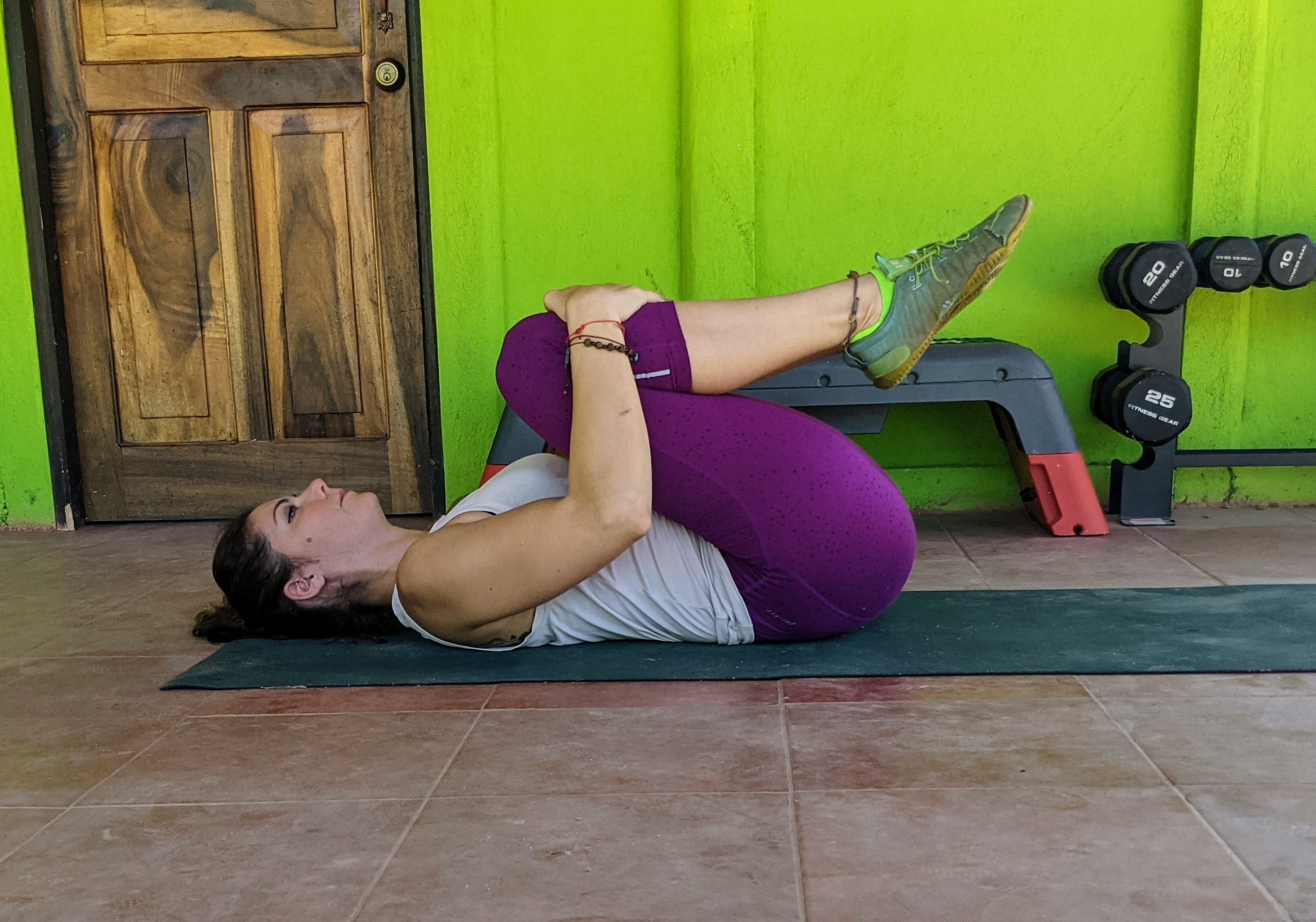
Knee to Chest
If you tend to have back pain while standing, Mikulsky says this might a joint issue or arthritis. If this is the case, a back extension might actually place more stress on your spine, leading to pain. (This is the tricky part about back issues—the stretches that are most appropriate for one issue might be the least appropriate for another.) If you find that standing or attempting back extension stretches—like the Standing Backbend or the Prone Press-up—cause more irritation or pain, try the Knee to Chest exercise.
How to do Knee to Chest
Lie on your back with your legs bent and feet on the floor. Place your hands on the back of each thigh and use your hands to guide your knees toward your chest. Place your hands on your shins and gently pull your knees even closer. You should feel the stretch across your lower back. Hold for 30 seconds to a minute, then repeat two or three times.
Now that you know these stretches for lower back pain, check out this easy stretching routine.



